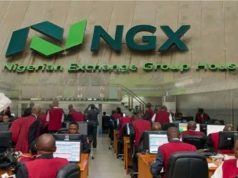TUE, 17 MAY, 2022-theGBJournal | It has been a challenging 2022 for Nigerian bank stocks. Year-to-date, the sector index has returned a disappointing 7.4% and has grossly underperformed the broader equity gauge (NGX ASI: +24.3%). We understand the reasons for underperformance but still rate banks for their dividend yields and value.
Investor reaction to the banks’ Q1 22 results has been largely neutral. We proffer some reasons for this. First, the average gain in EPS (+11.6% y/y) of our covered banks is not that impressive in the context of inflation at 15.9%. Furthermore, stripping out the exceptional rebound in STANBIC’s EPS, the average gain in EPS (+5.7% y/y) is not impressive at all.
Second, the domestic equity market has got bigger fish to fry. For example, the price of Brent oil is sharply up (+43.4% y-t-d) and has propelled stocks like Seplat Energy (+84.6% y-t-d) to all-time-highs. In addition, palm oil prices are up sharply and have propelled stocks like Presco (+127.8% y-t-d) and Okomu Oil Palm (+51.4% y-t-d). Elsewhere, the telcos have been performing well, and their underlying growth is looking much better than the banks at the moment. MTN Nigeria grew revenue by 22.2% y/y and EPS by 31.5% y/y in Q1 22.
Third, the equity market now seems to be interested in some re-rates, like the Brewers, which reported better-than-expected numbers in Q1. So, the attraction of the banking sector is not so much an EPS growth story as a store of value.
Q1 22 was a decent quarter in terms of earnings for our covered banks. Four of the five banks that published results reported
EPS growth: GTCO surprisingly reported an EPS decline. Most of the growth across our coverage was driven by increased funded income, following expansion in banks’ loan books and some upward repricing of loans. Higher yields in Q1 22 (versus Q1 21) saw banks earn higher interest on their investment securities portfolios y/y. Overall, banks’ Yields on Assets (YoA) were much improved compared with the prior year. Elsewhere, banks’ Cost of Funds faced some upward pressure: however, they were able to keep rises below the rise in asset yields. As a result, Net Interest Margins (NIM) were resilient. Non-interest revenues (NIR) also continued on their upward trajectory.
The narrative that the fundamentals of the banking sector are compelling has persisted, even as investor apathy around bank stocks remains. In our view, although bank margins and profitability have come down slightly in recent years, bank stocks have been oversold. In an environment where negative inflation-adjusted yields remain the theme, bank dividends continue to offer more attractive yields than Treasury bills. In addition, with yields on the rise, we think FY 21 may have been the bottom in terms of banks’ profitability. The valuations of our coverage banks remain compelling and hold value for long-term investors, in our view.-Analysis provided by Coronation Asset Management Research
Twitter-@theGBJournal|Facebook-The Government and Business Journal|email: gbj@govbusinessjournal.ng|govandbusinessj@gmail.com










